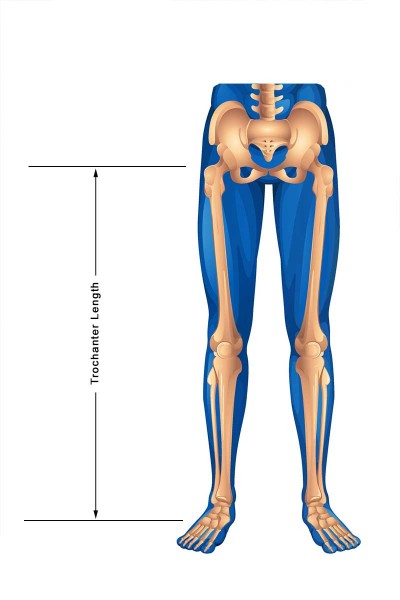By Curtis Taylor, University of Oregon
I became a track coach because I didn’t want to do math. Now that I am a track coach, I spend a lot of time doing math. – Curtis Taylor
Definitions
Performance Metric |
Symbol |
Units |
Comments |
Distance |
D |
m |
Measured in meters. |
Time |
T |
s |
Measured in seconds. |
Velocity |
V |
m/s |
Distance divided by Time (D/T). |
Stride Frequency |
SF |
Hz |
Number of foot contacts per second measured in Hertz. |
Stride Length |
SL |
m |
Distance between consecutive foot contacts measured in meters. |
Relationship of Sprint Performance Metrics
A sprinters velocity is determined by stride length and stride frequency. A sprinter can increase velocity by increasing their stride length, increasing their stride frequency, or both. The relationship among these three performance metrics can be expressed by the equation:
Equation 1: V = SL * SF
This equation can be rewritten as:
Equation 2: SL = V / SF
and
Equation 3: SF = V / SL
The table below shows the relationship of these three performance metrics for a range of values.
5.30 |
5.20 |
5.10 |
5.00 |
4.90 |
4.80 |
4.70 |
4.60 |
4.50 |
4.40 |
4.30 |
4.20 |
4.10 |
4.00 |
3.90 |
|
12.50 |
2.36 |
2.40 |
2.45 |
2.50 |
2.55 |
2.60 |
2.66 |
2.72 |
2.78 |
2.84 |
2.91 |
2.98 |
3.05 |
3.13 |
3.21 |
12.00 |
2.26 |
2.31 |
2.35 |
2.40 |
2.45 |
2.50 |
2.55 |
2.61 |
2.67 |
2.73 |
2.79 |
2.86 |
2.93 |
3.00 |
3.08 |
11.75 |
2.22 |
2.26 |
2.30 |
2.35 |
2.40 |
2.45 |
2.50 |
2.55 |
2.61 |
2.67 |
2.73 |
2.80 |
2.87 |
2.94 |
3.01 |
11.50 |
2.17 |
2.21 |
2.25 |
2.30 |
2.35 |
2.40 |
2.45 |
2.50 |
2.56 |
2.61 |
2.67 |
2.74 |
2.80 |
2.88 |
2.95 |
11.25 |
2.12 |
2.16 |
2.21 |
2.25 |
2.30 |
2.34 |
2.39 |
2.45 |
2.50 |
2.56 |
2.62 |
2.68 |
2.74 |
2.81 |
2.88 |
11.00 |
2.08 |
2.12 |
2.16 |
2.20 |
2.24 |
2.29 |
2.34 |
2.39 |
2.44 |
2.50 |
2.56 |
2.62 |
2.68 |
2.75 |
2.82 |
10.75 |
2.03 |
2.07 |
2.11 |
2.15 |
2.19 |
2.24 |
2.29 |
2.34 |
2.39 |
2.44 |
2.50 |
2.56 |
2.62 |
2.69 |
2.76 |
10.50 |
1.98 |
2.02 |
2.06 |
2.10 |
2.14 |
2.19 |
2.23 |
2.28 |
2.33 |
2.39 |
2.44 |
2.50 |
2.56 |
2.63 |
2.69 |
10.25 |
1.93 |
1.97 |
2.01 |
2.05 |
2.09 |
2.14 |
2.18 |
2.23 |
2.28 |
2.33 |
2.38 |
2.44 |
2.50 |
2.56 |
2.63 |
10.00 |
1.89 |
1.92 |
1.96 |
2.00 |
2.04 |
2.08 |
2.13 |
2.17 |
2.22 |
2.27 |
2.33 |
2.38 |
2.44 |
2.50 |
2.56 |
9.75 |
1.84 |
1.88 |
1.91 |
1.95 |
1.99 |
2.03 |
2.07 |
2.12 |
2.17 |
2.22 |
2.27 |
2.32 |
2.38 |
2.44 |
2.50 |
9.50 |
1.79 |
1.83 |
1.86 |
1.90 |
1.94 |
1.98 |
2.02 |
2.07 |
2.11 |
2.16 |
2.21 |
2.26 |
2.32 |
2.38 |
2.44 |
9.25 |
1.75 |
1.78 |
1.81 |
1.85 |
1.89 |
1.93 |
1.97 |
2.01 |
2.06 |
2.10 |
2.15 |
2.20 |
2.26 |
2.31 |
2.37 |
9.00 |
1.70 |
1.73 |
1.76 |
1.80 |
1.84 |
1.88 |
1.91 |
1.96 |
2.00 |
2.05 |
2.09 |
2.14 |
2.20 |
2.25 |
2.31 |
8.75 |
1.65 |
1.68 |
1.72 |
1.75 |
1.79 |
1.82 |
1.86 |
1.90 |
1.94 |
1.99 |
2.03 |
2.08 |
2.13 |
2.19 |
2.24 |
8.50 |
1.60 |
1.63 |
1.67 |
1.70 |
1.73 |
1.77 |
1.81 |
1.85 |
1.89 |
1.93 |
1.98 |
2.02 |
2.07 |
2.13 |
2.18 |
8.25 |
1.56 |
1.59 |
1.62 |
1.65 |
1.68 |
1.72 |
1.76 |
1.79 |
1.83 |
1.88 |
1.92 |
1.96 |
2.01 |
2.06 |
2.12 |
8.00 |
1.51 |
1.54 |
1.57 |
1.60 |
1.63 |
1.67 |
1.70 |
1.74 |
1.78 |
1.82 |
1.86 |
1.90 |
1.95 |
2.00 |
2.05 |
7.75 |
1.46 |
1.49 |
1.52 |
1.55 |
1.58 |
1.61 |
1.65 |
1.68 |
1.72 |
1.76 |
1.80 |
1.85 |
1.89 |
1.94 |
1.99 |
7.50 |
1.42 |
1.44 |
1.47 |
1.50 |
1.53 |
1.56 |
1.60 |
1.63 |
1.67 |
1.70 |
1.74 |
1.79 |
1.83 |
1.88 |
1.92 |
- Table 2 above shows the relationship among three sprint performance metrics: velocity, stride frequency, and stride length.
- Stride Frequency – The top row is stride frequency measured in foot contacts per second. The table includes stride frequencies from 3.90 to 5.30 foot contacts per second.
- Velocity – The left column is velocity measured in meters per second. The table includes velocities from 7.50 to 12.50 m/s.
- Stride Length – All other numbers in the table are stride length, measured in meters, for the corresponding velocity and stride frequency.
- The region in pink is an unnaturally high stride frequency.
- The region in yellow is an unnaturally low stride frequency.
- Example – An athlete with a stride frequency of 4.70 foot contacts per second and a velocity of 10.00 m/s will have a stride length of 2.13 meters.
How to Measure Trochanter Length

Figure 1: The Trochanter Length is measured from the floor in bare feet to the top of the greater trochanter.
Steps to measure the trochanter length are the following:
- Athlete stands erect on the floor in bare feet.
- Palpate the hip by firmly pushing the tissue to locate the top of the greater trochanter.
- Measure from the floor to the top of the greater trochaner in centimeters.
- Measure both sides and average the two measurements.
- Record the length for each athlete.


